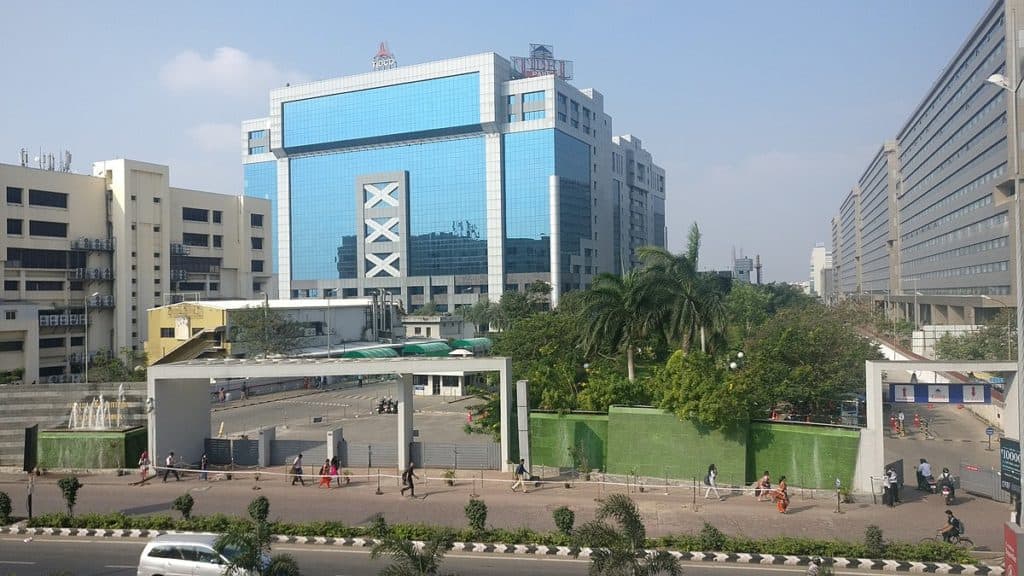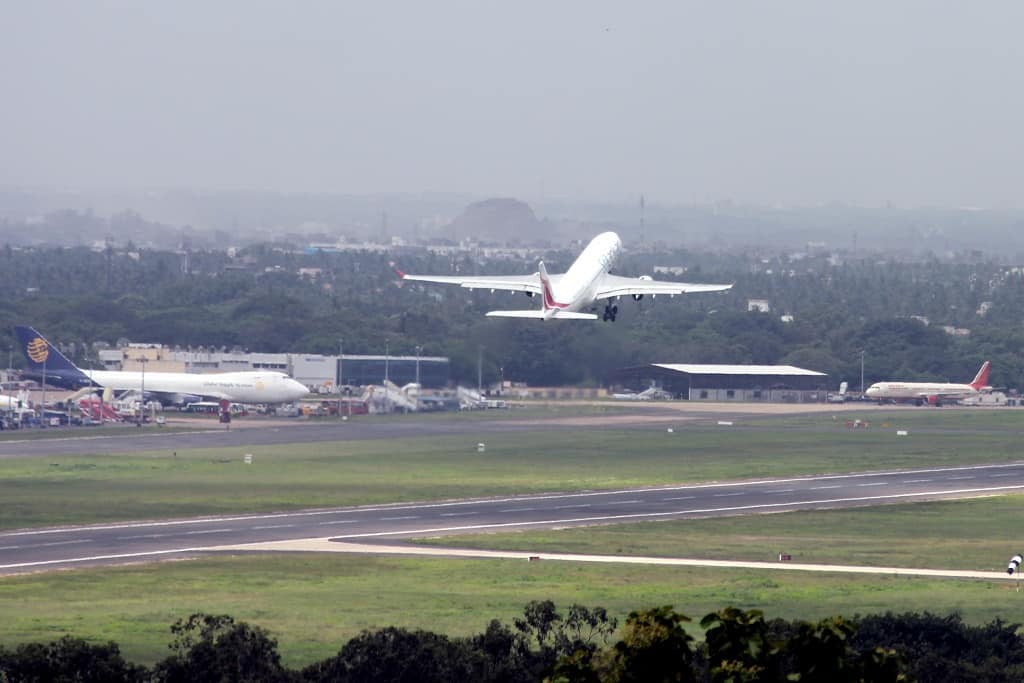Urbanisation has been progressing at a rapid pace globally, as people flock to cities in search of better lives and livelihoods. Cities have to ‘create spaces’ within and outside themselves to accommodate the growing population, but ad hoc expansion leads to environmental risks, high pollution levels and climate change. Chennai, where the population grew from 6.6 million in 2001 to 8.6 million in 2011 (as per the Census figures), has been no exception: The population explosion coupled with unplanned urbanisation raised land surface temperatures in Chennai during summer (March – May) by as much 5.8 degree C over the period 1991-2016, according to a recently published study.
The study, titled Analyzing and Predicting Urban Expansion and Its Effects on Surface Temperature for Two Indian Megacities: Bengaluru and Chennai, was conducted by a group of researchers from the Indian Institute of Technology, Kharagpur and published in July 2021. It underlines the effects of growing expansion of the Chennai Metropolitan Area and the simultaneously increasing encroachments of vegetative areas, wetlands and ecologically sensitive coastal zones.
Apart from noting the trends in land surface temperature in various areas of the city categorised by land use, it also predicts the likely growth of Chennai by the year 2025.
Read more: Why some parts of Chennai felt hotter than others this summer (2019)
Defining climate change in Chennai using land surface temperature
Due to unplanned urbanisation, cities end up creating what are called urban heat islands — those urban areas that experience warmer temperatures than the surrounding regions. These islands/pockets are usually found to be areas with closely spaced buildings and high population density. Thus heat gets trapped in these areas, especially between buildings, increasing the temperature beyond that in the peripheral regions.
“Land surface temperature (LST) is a proxy indicator of urban heat islands. LST is the skin temperature of the earth’s surface, which is normally more than the air temperature. If the land has been heated for a long time, then heat absorbed by the surface becomes high,” explains one of the researchers of the study, Bharath H Aithal, Assistant Professor at the Ranbir and Chitra Gupta School of Infrastructure Design and Management at Indian Indian Institute of Technology, Kharagpur.
Higher land surface temperature can be attributed to increasing human activities like transportation, construction, power generation, all of which cause higher pollution levels and emission of greenhouse gases. Thus, it is a key determinant of the greenhouse effect and hence global warming, and in that sense, it helps to define likely climate change.
Read more: Why Chennai needs to put its ‘heat action plan’ to practice right away
Temperature trends by land use in Chennai
Using remote sensing technology, the researchers at IIT Kharagpur measured land surface temperature for four land use classes over the period 1991 to 2016. These are:
- Urban – residential and industrial areas, paved surfaces and built-up areas;
- Vegetation – forests, croplands and nurseries;
- Water bodies – tanks, lakes, rivers and reservoirs;
- Others – rocks, quarry pits, open ground at building sites and unmetalled road.
Urban areas
The study found that the area marked ‘urban’ under the above land use classification has increased from 1.46% in 1991 to 22% in 2016. This spiked up the surface temperature from 33.34 degree C to 38.92 degree C.
“There is very little space, often none at all, around buildings these days. Also, the architecture of houses has changed. People want huge glass facades [in buildings]. India has a tropical climate, hence heat has to be dissipated outside, and cool air should come inside. Using glass will trap heat,” says Aithal adding that this will increase the dependence on air-conditioners, releasing hot air outside along with carbon emissions.
This practice is actually seen in Chennai. “IT companies in Chennai glass-up their offices, attracting more heat into the building. This makes it necessary for them to install more air-conditioners, which will, in turn, heat up the outside [of the building],” says Pavithra Sriram, a Chennai-based architect, adding that building materials are also predominantly unsustainable.

Pic: Shanmugam P/Wikimedia Commons (CC BY-SA 4.0)
If traditional materials like mud or stone were used to construct buildings like in the olden days, then the building would have a vacuum inside. “Even when the air outside is hotter, the interiors of the building would be naturally cooler,” explains Pavithra. However, she concedes that mud or stone would not be feasible to build high-rise complexes, hence people turn to materials like concrete and steel.
Areas under vegetation
Although the overall area under vegetation has slightly increased from 1.38% to 1.83% over the period, the surface temperature of these areas went up to 37.15 degree C in 2016 from 30.9 degree C in 1991. According to the study, one of the reasons for the above is the deforestation of 50 acres of green cover, cleared to set up a thermal power plant near Kattupalli. A study by the Care Earth Trust in the aftermath of cyclone Vardah pegged the city’s green cover at 15% (2018), woefully short of the 33% recommended by the guidelines of Union Ministry of Environment, Forests and Climate Change.
Read more: Opinion: Chennai needs a law to save its green lungs
Water bodies
Areas classified under water bodies also saw a slim rise from 27.64% to 28.34%, but land surface temperatures in such areas rose to 30.49 degree C from 25.77 degree C, over the period 1991-2016. “Most lakes in Chennai receive untreated water, which pollutes these water bodies. This can increase the temperature of the lakes,” shares R Saikamala, a conservation architect.
When lakes are contaminated, the nutrient content in the water body increases, leading to eutrophication. “This forms a barrier and does not allow sunlight to penetrate. Thus, heat cannot be absorbed efficiently by the water body, preventing the creation of cooling points in the city,” explains Aithal.
Water body contamination is a big problem in Chennai. A recent report in The Hindu talks of how, despite repeated efforts to clean the Cooum river, slurry from construction sites is discharged in the river.
Other land use
Finally, the ‘Others’ category stood at 47.83% in 2016 from 69.52% of area in 1991, with temperatures in these areas increasing from 32.45 degree C to 42.13 degree C. Aithal explains that in many of these areas, classified as ‘Other’ in terms of land use, the transition entailed clearing swathes of agricultural and green lands, resulting in rise of surface temperatures.
The research also identified places with high and low surface temperatures for 2016. Chennai International Airport, the open areas near Pallikaranai marshland, and T Nagar showed the greatest surface temperatures.
“Airports are densely built-up spaces. The air-conditioning and closed spaces trap heat. Also, they have runways that are built with heat-sensitive material, indicating high temperatures in the region. There are not many lands with vegetation or water bodies either, which can absorb the heat and make the area cooler. As for the open areas, these are bare grounds with no trees. Hence there is high temperature in such areas. These grounds may be earmarked for some construction project,” clarifies Bharat Aithal.
Areas with vegetation like Guindy National Parks have moderate LST. Water bodies like Puzhal lake, Cholavaram tank, Chembarambakkam lake show lower temperatures.
Dangers of high Land Surface Temperatures
- Rising temperatures have a direct impact on the health of people. According to the World Health Organisation, high temperatures can cause cardiovascular and respiratory diseases. “LST studies can help in identifying the locations where the temperature has been rising at a higher pace. Thus, region-specific measures can be taken,” says Aithal.
- LST also affects agriculture and aquaculture. Higher temperatures can disrupt ecosystems, thus making it difficult for organisms to survive. Unplanned urban expansion also impedes agriculture. “We should not construct in agricultural or fertile lands. It is hard to find lands with fertile soil,” says Saikamala.
- “Chennai being a coastal city faces a huge threat of sea-level rise. With rising LST, sea levels are rising and studies on LST can help us understand the phenomenon. This also affects marine life, further affecting the fishery sector,” explains Aithal.
- Rainfall patterns can be altered due to increasing surface temperatures. According to the University Corporation for Atmospheric Research, higher temperatures may cause more evaporation and produce higher rainfall, increasing the risk of floods. But Bharat also talks about another school of thought which points out that the warm air could be trapped by greenhouse gases and other pollutants, without allowing it to go into the atmosphere and form clouds. Thus, the result can be deficient rain too.
Solutions to nip climate change at the bud
Bharath Aithal lists a few measures:
- Trees can be planted on the streets for shade and plants could be used to construct entries to buildings. This will reduce land surface temperatures and improve thermal comfort.
- Developing gardens and mini forests with native vegetation can cool down the microclimate. Chennai has begun growing Miyawaki urban forests in various areas like Kotturpuram, Sholinganallur and Mugalivakkam to improve the microclimate of the area.
- Water-sensitive urban design needs to be developed. Ponds, pools, fountains, hybrid systems like wind towers and sprinklers can be developed to cool the climate. This also adds to the aesthetics of the city.
- Also, water bodies (lakes) must be maintained with due care, and saved from discharge of contaminants.
“There are so many illegal constructions on wetlands, which are low-lying areas. These places are bound to get flooded,” says Saikamala explaining that the excess water from rainfall would not have a sink to drain. A report in The New Indian Express states that the water bodies around the Chennai metropolitan area would be mapped to preserve these blue spaces, which is the need of the hour. - Introducing green roofs and using cool materials for construction can cool down the interior temperature.
Predictions of growth
By 2025, Chennai is predicted to expand to an area of 2375.73 sq km. Much of this urban growth is expected to occur away from the existing urbanised areas along the arterial roads that connect the city. The Government of India has also taken up an infrastructure project called the Chennai-Bangalore Industrial Corridor Project, which is expected to further strengthen commerce and industrial relations with Southeast Asia.
But even as such advancements are planned, it is time for authorities and citizens to wake up to the climate implications and save the city from the looming threats of climate change. Urbanisation is important for economic sustainability of the city, but it should not be environmentally unsustainable. As the Chennai Metropolitan Development Authority envisions a Third Master Plan for Chennai (by 2026), such considerations should be key priority.
